.
Polyphemos (or Polyphemus) was a Cyclops who lived in Sicily but was hostile to men after he failed to win the love of Galatea the sister of Thetis with songs and poems. Odysseus and his men found a cave on the island of the Cyclopes (from Cyclops ,cyclos and ops, i.e. “Round-eyed”). Suddenly Polyphemos enters in the cave, his home. He closes with a giant rock the cave. He eats some of Odysseus' men. Odysseus conceives a plan and tells his men to sharpen a pole.
"So he spoke, and again I handed him the flaming wine. Thrice I brought and gave it him, and thrice he drained it in his folly. But when the wine had stolen about the wits of the Cyclops, then I spoke to him with gentle words: 'Cyclops, thou askest me of my glorious name, and I will tell it thee; and do thou give me a stranger's gift, even as thou didst promise. Noman is my name, Noman do they call me—my mother and my father, and all my comrades as well.' So I spoke, and he straightway answered me with pitiless heart: 'Noman will I eat last among his comrades, and the others before him; this shall be thy gift.' He spoke, and reeling fell upon his back, and lay there with his thick neck bent aslant, and sleep, that conquers all, laid hold on him... Then verily I thrust in the stake under the deep ashes until it should grow hot, and heartened all my comrades with cheering words, that I might see no man flinch through fear. But when presently that stake of olive-wood was about to catch fire, green though it was, and began to glow terribly, then verily I drew nigh, bringing the stake from the fire, and my comrades stood round me and a god breathed into us great courage. They took the stake of olive-wood, sharp at the point, and thrust it into his eye, while I, throwing my weight upon it from above, whirled it round, as when a man bores a ship's timber with a drill, while those below keep it spinning with the thong, which they lay hold of by either end, and the drill runs around unceasingly. Homer, Odyssey
Almost all Cyclopes hear Polyphemos screaming. They ask from far “Who is hurting you?” Polyphemos response is “Noman! Noman is hurting me!” With another idea Odysseus and his men escape from the cave. Polyphemos opens the cave allowing only his sheep to get out. Blind he checks each sheep but he doesn't know that Odysseus and his men had strapped themselves to the bottoms of the sheep. Odysseus now a free man and proud yells to Polyphemos his real name. Not a good idea because Polyphemos asks the help of his father Poseidon who now knows that Odysseus is responsible for what happened to his son.
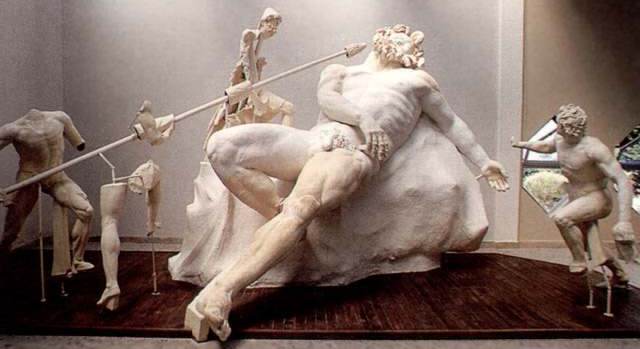
Polyphemos group, copy of a bronze original in the 2nd century BC or 14-19 AD by the three sculptirs
1)Athanadoros son of Hagesandros,
2) Hagesandros son of Paionios
3) Polydoros son of Polydoros of Rhodes
(who produced the Laocoon Group), depicting the Blinding of the Cyclops Polyphemos by Odysseus. It was constructed from many fragments discovered around 1960 at Sperlonga a pleasure resort of the Emperor Tiberius (from 14-37 AD). Why did Odysseus and his companions not kill the sleeping Polyphemos? Odysseus explains:
“I was at first inclined to seize my sword, draw it, and drive it into his vitals, but I reflected that if I did we should all certainly be lost, for we should never be able to shift the stone which the monster had put in front of the door”
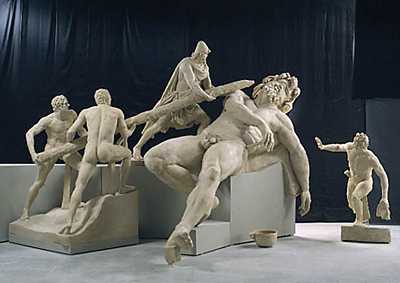

A reconstruction, Odysseus with three companions and the drunken Polyphemos.
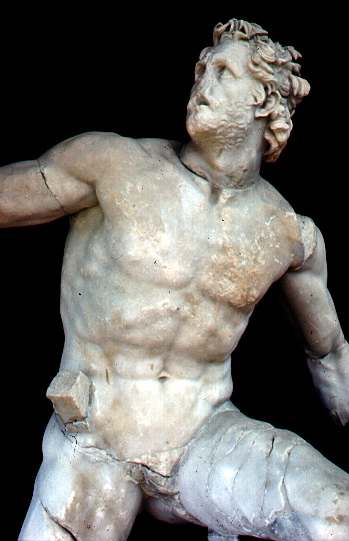
Odysseus companion carrying a wine skin (see the reconstruction image)
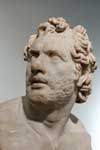
Companion of Odysseus, British Museum 1860
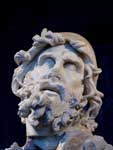
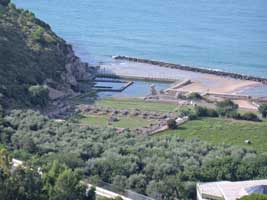
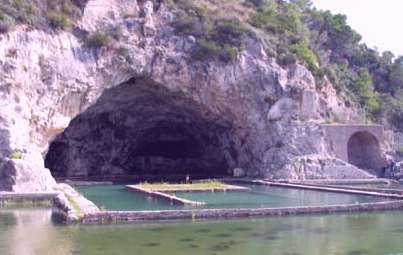
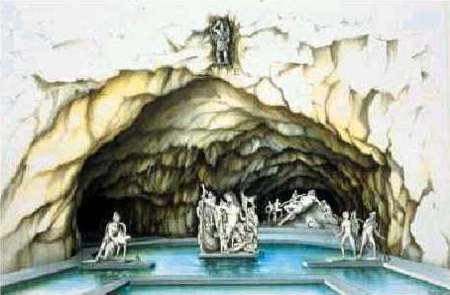
The Polyphemos Group was inside a Grotto (Spelunca) forming the summer dining hall from a villa of Tiberius in Sperlonga, Italy. In the entrance there was another group of Odysseus with his ship and the Scylla monster, Menelaos holding the body of Patroklos and Diomedes of Argo and Odysseus with the stilen Palladium ( a cult image of Athena that protected the Trojans)

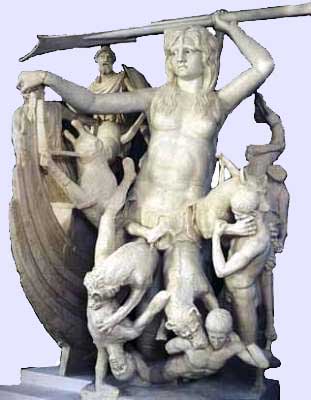
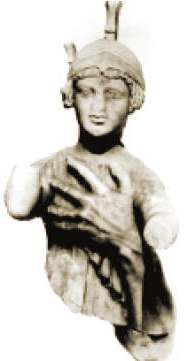
1) Pasquino Group: Menelaos with the dead Patroklos, 2) the Scylla Monster attacking the ship of Odysseus and 3) part of the Palladium in the hand probably of Diomedes.
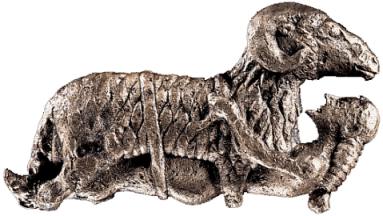
Odysseus method to escape from the Polyphemos cave (work from Delphi)
detail—red-figure kalyx krater depicting Scylla: (rest of vase depicts Zeus, Europa, Triton) Greek, from Paestum, in southern Italy; c. 340 BC
From Pergamon to Sperlonga: Sculpture and Context (Hellenistic Culture and Society)- by Langford Conference of the Department of Classics 1997 Florida State (Corporate Author), Nancy Thomson De Grummond (Editor), Brunilde Sismondo Ridgway (Editor) University of California Press ( 2001) ISBN: 0520223276
Gösta Säflund, The Polyphemus and Scylla groups at Sperlonga (Stockholm, Almqvist & Wiksell, 1972)
| Ancient Greece
Science, Technology , Medicine , Warfare, , Biographies , Life , Cities/Places/Maps , Arts , Literature , Philosophy ,Olympics, Mythology , History , Images Medieval Greece / Byzantine Empire Science, Technology, Arts, , Warfare , Literature, Biographies, Icons, History Modern Greece Cities, Islands, Regions, Fauna/Flora ,Biographies , History , Warfare, Science/Technology, Literature, Music , Arts , Film/Actors , Sport , Fashion --- |

